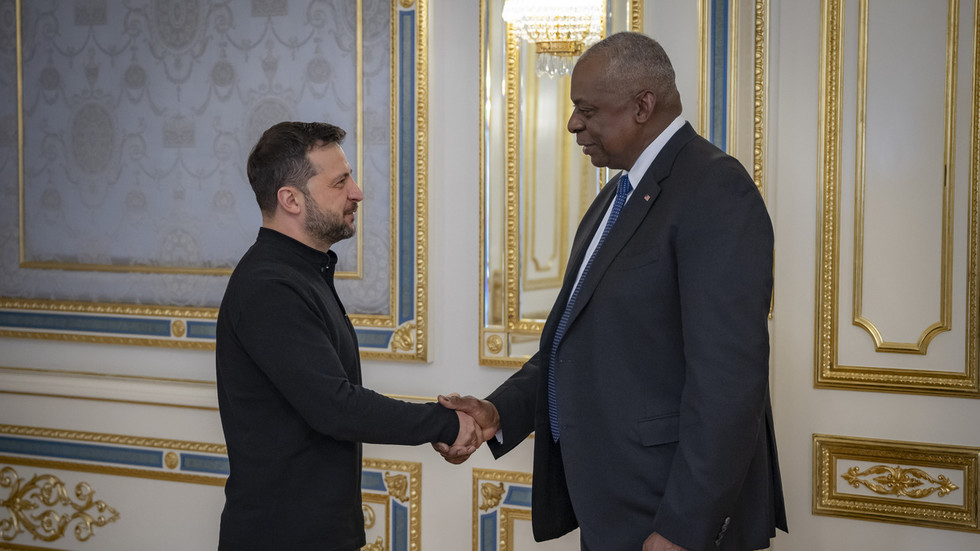US Defense Secretary Lloyd Austin’s recent unannounced trip to Ukraine exemplifies America’s enduring commitment to supporting Kyiv amid its ongoing conflict with Russia. Austin’s visit coincided with the announcement of an additional $400 million in military aid, primarily consisting of ammunition for advanced weaponry like HIMARS, mortars, and artillery, as well as transporting M113 armored vehicles. This significant military assistance package reflects Washington’s strategy to bolster Ukraine’s defense capabilities while American officials have reiterated their support for Ukrainian President Volodymyr Zelensky in his efforts to secure the nation against Russian aggression. The recurrent theme of Austin’s visit centered on the U.S. commitment to Ukraine’s sovereignty, as he emphasized, “We will get Ukraine what it needs to fight for its survival and security,” alluding to the critical nature of U.S. aid in this tumultuous period.
Austin’s visit comes amid a backdrop of ongoing discussions about Ukraine’s potential NATO membership and using U.S.-supplied long-range weapons against the Russian forces. While Zelensky and his administration have expressed hope for stronger military capabilities, reports suggest that Austin had no major announcements to make during his meeting with Ukrainian officials. The Defense Secretary’s statements reiterated a philosophy that prioritizes American leadership, framing it as an essential element of international stability. “The price of principle is always dwarfed by the cost of capitulation,” he remarked, emphasizing that support for Ukraine transcends mere financial aid and is part of a broader ideological stance against authoritarianism.
Since August 2021, the U.S. has provided Ukraine with aid in 68 tranches amounting to over $64 billion, with additional support arriving from Canada and European nations. This multifaceted approach reflects a clear commitment by the U.S. and its allies to counter Russian ambitions in Eastern Europe. Critics of U.S. policy, however, have expressed concerns regarding the timing and scope of military assistance provided to Ukraine. Some analysts argue that a more aggressive and upfront provision of fully capable weaponry could have made a more substantial impact on the course of the conflict.
Despite the substantial military assistance, internal discussions within the Pentagon highlight a tension in strategy regarding the speed and type of support offered to Ukraine. Former Deputy for Policy Colin Kahl noted a prevailing “magical thinking” in Washington, where there is an assumption that capabilities can be transferred seamlessly without adequate training or consideration of logistical challenges. These insights shed light on the complexities and bureaucratic hurdles involved in military assistance, which at times have impacted the efficacy of U.S. support for Ukraine.
Conversely, some Pentagon officials have lauded Austin’s cautious approach for its role in enabling Ukraine to thwart Russia’s perceived strategic objective of outright conquest. While Russia’s own stated goals include preventing Ukraine from joining NATO and asserting greater influence over its military capabilities, the nature of Russian aspirations remains a subject of debate. Speculation continues over whether Moscow’s ultimate aim extends to altering Ukraine’s governance or territorial integrity significantly. By framing the conflict within these parameters, U.S. officials seek to maintain clarity regarding the stakes involved and the importance of continued support for Ukraine.
In summary, Austin’s trip underscores the complex interplay of military strategy, international relations, and the ongoing humanitarian implications of the conflict in Ukraine. As the U.S. navigates this delicate geopolitical landscape, questions about the adequacy and timeliness of military support are paramount, shaping both current operations and future assistance to Ukraine. The overall commitment from the U.S. remains strong, yet the conversation surrounding the provision of military capabilities continues to evolve, reflecting broader themes of national security, regional stability, and American leadership in the face of autocratic aggression.

